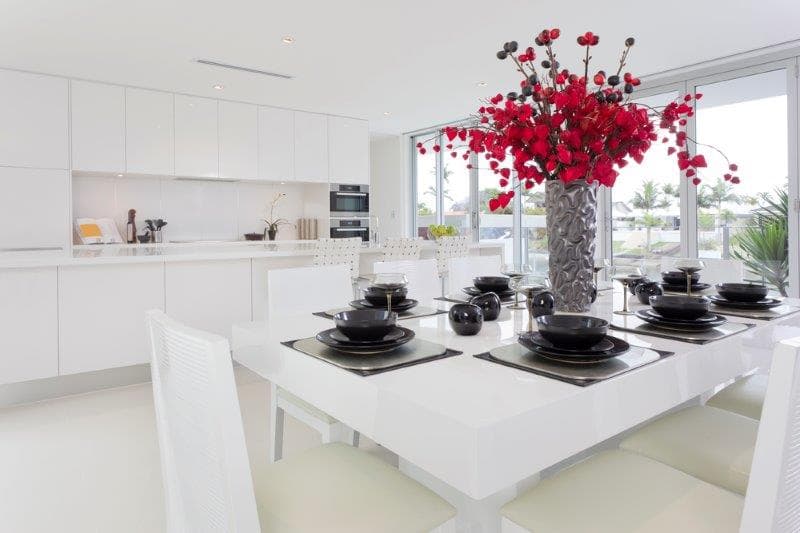
Wood siding isn't only a matter of aesthetics. Even though it's been at the forefront of many myths, it still has a lot of advantages there are yet to be known by the general public. Natural wood siding is available in different essences (cedar, spruce, pine, etc.), and it will give a unique touch to your house, chalet or store.
Becoming more and more popular in Quebec, wood siding is not only durable when properly cared for, but according to Maibec, "Wood goes very well with several other types of materials, which makes it possible to integrate into various architectural styles." In this article, you will be able to know more about the benefits, the downsides and the proper care needed for exterior wood sidings.
The Benefits of Wood Siding
Eco-Friendly & Sustainable
To start with, wood is the most ecological choice you can make. Compared to vinyl which is made of plastic and oil products, it produces fewer CO2 emissions when fabricated. However, it's important to inform yourself about finding a supplier that comes from certified forests, thus reducing waste and promoting sustainable forestry.
Not only is it recyclable, but it provides more cost-effective insulation than other cladding could offer you, which will allow you to reduce your energy consumption. On the durable side, wood is more solid than we could think. In addition to being chock resistant, "a solid wood cladding without protection or finishing product can last a very long time, up to 30 years." (LaPresse.ca)
Economical
Although at first glance wood seems more expensive when installed (compared to some other options available to you), it will be more profitable in the long run for your money. Here's what Maibec explained:
"There are other factors to consider, such as the total life cycle of the siding. Maintenance extends the life of real wood. Ultimately, wood becomes one of the most affordable materials in the long run."
Wood Siding Maintenance
With the right care and products, it's easy to maintain your wood siding. The key is to regularly inspect your siding, especially to see if there is any water infiltration. Aside from cedar, natural wood requires minimal maintenance.
However, without any treatments to protect it, your siding can age rapidly. It is preferable to apply an oil or a product to treat your wood at least every 5 years. This will protect the woos from its surrounding environment. For more precision and advice, you can always ask for the help of a contractor that specializes in wood sidings.
Few Drawbacks
Although resistant, wood is not indestructible. Naturally, it could crumble, crack or tarnish. In addition, and that is an obvious downside, wood is more vulnerable in the event of a fire. If installed incorrectly, you could leave room for mould as it is susceptible to water infiltration. Be sure to follow the necessary steps during installation to avoid rapid deterioration of your siding.
Get 3 renovation quotes for your exterior project siding
RenoQuotes.com can help you get quotes for your exterior siding project. If you submit your project, we’ll put you in contact with top-rated contractors. Fill in the form on the homepage (it only takes a few minutes), and you will get estimates from trusted professionals.
Dial 1-844 828-1588 to speak with one of our customer service representatives
Looking for something else?
Related articles
The latest industry news, interviews, technologies, and resources.

Léa Plourde-Archer
•11 Jun 2025
Rooftop terraces are becoming increasingly popular as a beautiful and functional addition to homes. Whether you’re in a bustling city or a quiet countryside, transforming your roof into a liveable outdoor space can elevate your property. But how much does it cost, and what steps should you take before starting?

Editorial Team
•07 Nov 2023
As people begin to recognize the effects of their carbon footprint while living in urban environments, the idea of installing a green roof is becoming a popular choice.

Editorial Team
•07 Nov 2023
You may be of the mind that renovation is renovation. When considering the end result, this is the case but when it comes to the process itself, there are many different factors that weigh in. If you’re currently living in a condo and wanting to renovate, you’ll face certain limitations, possibilities and strategies for approaching it. In this article, we’re going to look at a condo kitchen renovation and all of what you should consider when renovating this space. This will help you to avoid unwanted surprises during the process.

Amanda Harvey
•07 Nov 2023
If your home décor embraces the rustic or the warm, then chances are you’re looking for ways to incorporate these details into all the rooms of your home. This is especially true of the kitchen, where it’s likely a plethora of stainless steel appliances live. If you’re looking for more of a down to earth vibe, have you considered a butcher block counter top?

Editorial Team
•22 May 2024
The housing crisis has been a pressing issue in Ontario for several years now, with rising prices and low availability making it increasingly difficult for residents to find affordable and suitable housing. In response to this, modular homes or housing have emerged as a potential solution that could help address these challenges and provide a more sustainable and efficient way to build homes in the province.